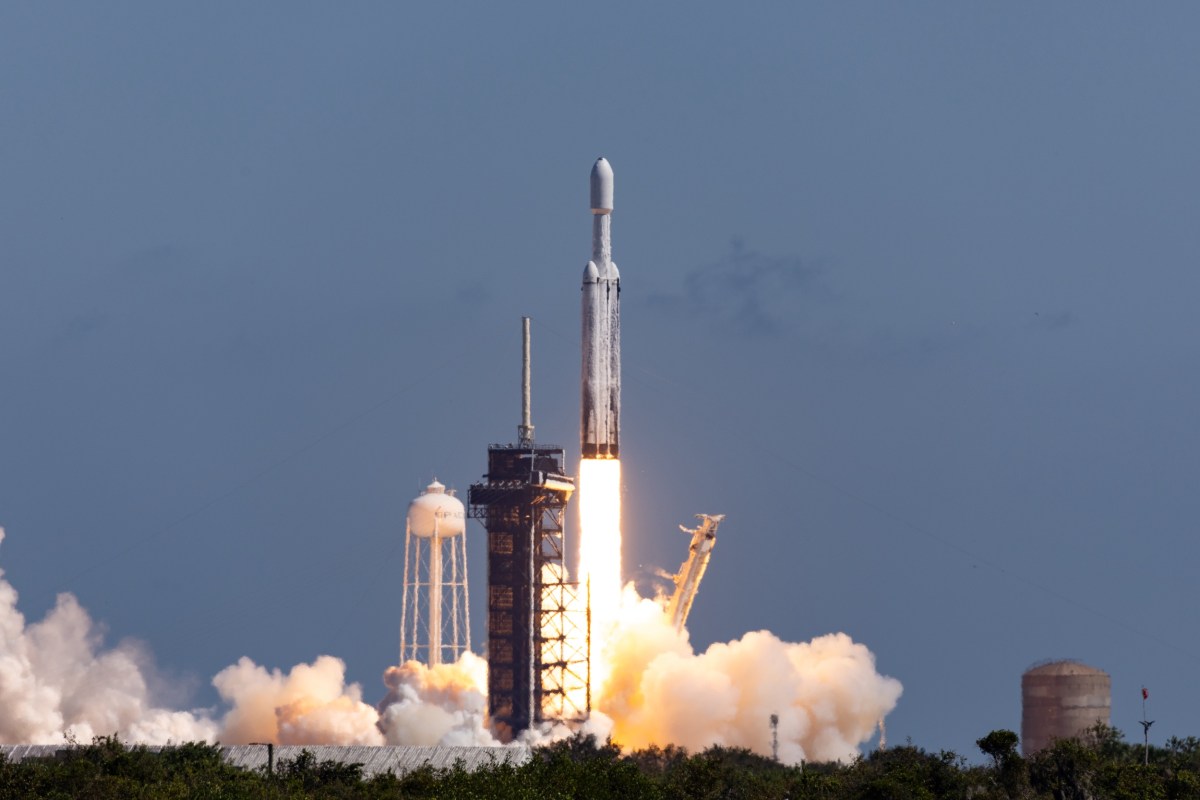MILAN — A long-awaited mission to study if an icy moon of Jupiter could harbor life is on its way after a launch on a Falcon Heavy rocket Oct. 14.
The Falcon Heavy lifted off from Launch Complex 39A at 12:06 p.m. Eastern. After the second of two burns by the upper stage that placed it on an Earth-escape trajectory, the Europa Clipper spacecraft separated from the stage a little more than an hour after liftoff. The spacecraft made contact with ground controllers minutes later, returning telemetry showing it was in good condition.
Europa Clipper is one of NASA’s most expensive science missions yet, with an estimated total lifecycle cost, including four years of operations after arriving at Jupiter in 2030, of $5.2 billion. It was one of the top priorities for flagship-class planetary science missions in decadal surveys by planetary scientists, building on proposals for Europa orbiters or flyby missions for at least two decades.
That interest was linked to the mission’s goal of determining if Europa, a moon of Jupiter thought to have a subsurface ocean beneath its icy surface, could host life. The combination of liquid water, energy from the moon’s interior and the presence of organic compounds would give the moon all the basic ingredients needed for life.
The spacecraft will not search for life itself but rather see if the moon does have the right conditions to support life. “We continue to underscore that Europa Clipper is not actually a life-detection mission but a habitability investigation,” said Gina DiBraccio, acting director of NASA’s planetary science division, at an Oct. 13 briefing about the mission’s science.
“We want to understand whether Europa has the key ingredients to support life in its oceans,” said Robert Pappalardo, Europa Clipper project scientist at the Jet Propulsion Laboratory, at the briefing.
Europa Clipper is equipped with nine dedicated instruments as well as a gravity and radio science experiment. Those instruments, ranging from cameras and spectrometers to magnetometers, will study Europa and its interior during 49 flybys that provide “nearly complete coverage” of the moon, he said.
That payload of instruments requires a large spacecraft. The spacecraft weighed 5,700 kilograms fully fueled at launch and its solar arrays, when fully deployed, will make the spacecraft 30.5 meters long.
The spacecraft also requires shielding to protect it from radiation in the form of charged particles accelerated by Jupiter’s powerful magnetic field. Even with that shielding, though, there were concerns that transistors on the spacecraft might degrade, requiring changes to the mission profile or even replacement that would have delayed the mission. NASA decided in September that the transistors can survive the baseline mission.
Development challenges, and associated costs, posed a risk to the mission in its early development. However, the mission had a champion in former Rep. John Culberson (R-Texas), who had a strong personal interest in the mission and, in his role as a member and, later, chairman of the House appropriations subcommittee that funds NASA, ensured the mission received funding that was often well above agency requests.
Culberson had also pushed for NASA to launch Europa Clipper on its Space Launch System, which would have enabled a direct journey to Jupiter lasting less than three years. NASA, though, warned in 2020 that “potential hardware compatibility issues” made it unwise to launch Europa Clipper on SLS, and Congress eventually relented and allowed NASA to solicit bids for a commercial launch. That was won by SpaceX’s Falcon Heavy in 2021 for $178 million, a very small fraction of the estimated cost of a single SLS.
Falcon Heavy, however, could not send Europa Clipper directly to Jupiter even when expending all of its three booster cores, as was the case on this launch. The spacecraft will instead make a flyby of Mars early next year and of Earth in late 2026 to arrive at Jupiter in April 2030.
For scientists, though, the expected scientific payoff will be worth the wait. “I’ve dreamed of returning to Europa since the Galileo era, so for about 25 years now,” said Cynthia Phillips, Europa Clipper project staff scientist at JPL, at the briefing. “I’ve worked actively on the Europa Clipper project for almost 10 years, and I just can’t wait to finally get some new closeup views of the surface of Europa. I know I have to be patient for another six years.”
